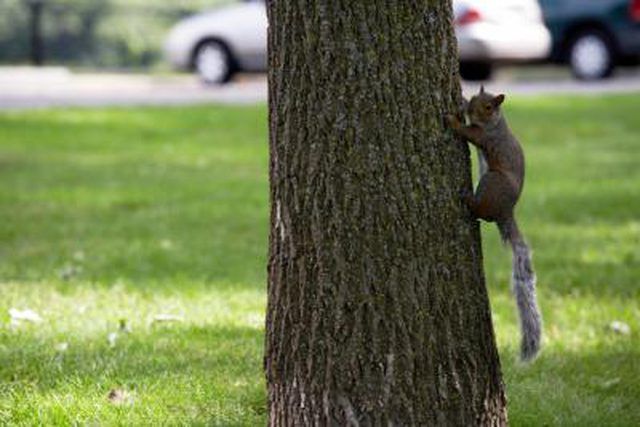Bulbs
Flower Basics
Flower Beds & Specialty Gardens
Flower Garden
Garden Furniture
Garden Gnomes
Garden Seeds
Garden Sheds
Garden Statues
Garden Tools & Supplies
Gardening Basics
Green & Organic
Groundcovers & Vines
Growing Annuals
Growing Basil
Growing Beans
Growing Berries
Growing Blueberries
Growing Cactus
Growing Corn
Growing Cotton
Growing Edibles
Growing Flowers
Growing Garlic
Growing Grapes
Growing Grass
Growing Herbs
Growing Jasmine
Growing Mint
Growing Mushrooms
Orchids
Growing Peanuts
Growing Perennials
Growing Plants
Growing Rosemary
Growing Roses
Growing Strawberries
Growing Sunflowers
Growing Thyme
Growing Tomatoes
Growing Tulips
Growing Vegetables
Herb Basics
Herb Garden
Indoor Growing
Landscaping Basics
Landscaping Patios
Landscaping Plants
Landscaping Shrubs
Landscaping Trees
Landscaping Walks & Pathways
Lawn Basics
Lawn Maintenance
Lawn Mowers
Lawn Ornaments
Lawn Planting
Lawn Tools
Outdoor Growing
Overall Landscape Planning
Pests, Weeds & Problems
Plant Basics
Rock Garden
Rose Garden
Shrubs
Soil
Specialty Gardens
Trees
Vegetable Garden
Yard Maintenance
How to Use Sheet Metal Around Trees
How to Use Sheet Metal Around Trees. The prized trees in your yard are little more than playgrounds, shelters and food sources for common garden pests, such as squirrels, rats and raccoons. Rats like to hide in the dense clusters of dead palm fronds that hang below the healthy canopy. Squirrels gather leaves and sticks and build their own nests in...

The prized trees in your yard are little more than playgrounds, shelters and food sources for common garden pests, such as squirrels, rats and raccoons. Rats like to hide in the dense clusters of dead palm fronds that hang below the healthy canopy. Squirrels gather leaves and sticks and build their own nests in trees. Raccoons are sneaky bandits who are most problematic for stealing fruit from fruit trees. The rough texture of bark coupled with their tiny claws make it easy for these garden pests to climb trees, but they can't gain footing on slick sheet metal collars.
Things You'll Need
Lopping shears
Pruning saw
Measuring tape
Marker
Tin snips
Thick gloves
Flat file
Duct tape (optional)
Power drill
1/8-inch high-speed titanium drill bit
Aluminum tie wires
Measure the circumference of the tree trunk. Cut a piece of sheet metal about 2 to 3 feet wide and 6 to 8 inches longer than the trunk circumference. Use thin, easily flexible sheet metal, such as 26 gauge, that bends easily around trees. Draw the lines with a permanent marker and use a pair of tin snips to cut through the sheet metal. Wear thick leather gloves and long sleeves so you don't cut yourself on the sheet metal.
File down the sharp sheet metal edges and round the corners, using a flat file. Cut sheet metal is razor sharp, so you might also apply duct tape to dull the edges and corners.
Mark one edge of the sheet metal with two marks for pilot holes; place the marks about 2 inches in from the edge with one positioned 2 inches from the top and the other mark 2 inches from the bottom. Mark along one of the 2- to 3-foot edges and not along the edges cut to the length of the circumference.
Drill a 1/8-inch pilot hole through each of the marks, using a power drill and a high-speed titanium drill bit. Mark through the holes to indicate the location for pilot holes on the opposite end of the sheet metal. Drill two more pilot holes at each mark.
Reposition the sheet metal around the tree with the pilot holes at each end lined up. The top of the sheet metal should rest at least 5 feet off the ground; if you have a tree without low branches, position the sheet metal with the top as far as 8 feet off the ground. Enlist a helper to hold the sheet metal in place while you push a piece of aluminum tie wire through the holes, wrap the wire to the front of the sheet metal and twist with pliers to tighten. Secure the wires tightly to ensure the metal collar stays in place; this method spares you drilling damaging holes into the tree trunk.
Remove the wires and the sheet metal collar as the tree trunk grows. The extra 6 to 8 inches added to the sheet metal length allows you to adjust the size of the collar rather than using a new piece of sheet metal. Reposition the collar and insert a marker through the pilot holes to mark the location for new pilot holes. Reattach the sheet metal with new tie wires.
Tips & Warnings
Raccoons (Procyon lotor) and roof rats (Rattus rattus) don't have as great a jumping ability as squirrels. If squirrels are not a problem, the top of the sheet metal band only needs to extend about 4 feet off the ground.
Tree squirrels that might prove a nuisance in your garden include fox squirrel (Sciurus niger), eastern gray squirrel (Sciurus carolinensis), and western gray squirrel (Sciurus griseus).